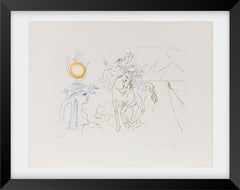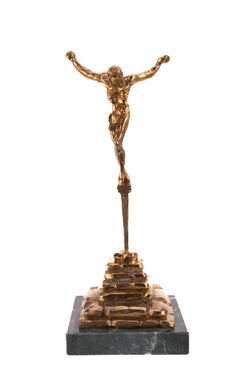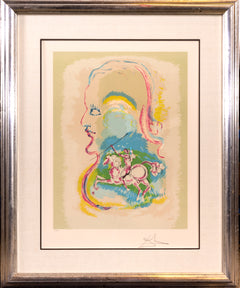
Salvador Dali - Artwork for Sale

Salvador Dali: The Eccentric Genius of Surrealism
Salvador Dali is widely considered the best know surrealist artist in history and one of the most important artists of the 20th century. His “Persistence of Memory” is one of the most recognizable pieces of contemporary art in the world today. Dali worked in a wide range of mediums, including paintings, jewelry, furniture, sculpture, and large-scale installations. He was renowned for his eccentric personal style as well as his art.
Dali was born in Figueres, Spain, in 1904. His family recognized his talent and encouraged his artistic pursuits form an early age. In 1917, Dali’s father hosted an exhibition of charcoal drawings in their home, and the following year Dali held his first public exhibition at the Theatre in Figueres. The Theatre was later purchased by Dali in 1960 and turned into a museum to showcase the impressive collection of his life’s work.
In 1922, Dali moved to Madrid to study at the Real Academia de Bellas Artes de San Fernando, where he began to gain recognize for his cubist works and his eccentric personal style. In 1927, Dali held his first solo art exhibition in Barcelona. The exhibition was well received by both the public and critics.
Until 1929, Dali experimented with a variety of styles. While some themes in his early work repeated throughout his art career, he was not considered a surrealist until 1929 when he officially joined the surrealist group. In 1931, Dali painted “Persistence of Memory” featuring melting clocks. The painting would not go on only to be Dali’s best-known work, but it also became the most well-known surrealist work of all time. During the 1930’s, Dali became increasingly interested in large scale installation works including his 1939 “Dreams of Venus” which debuted at the New York World’s Fair.
Despite his iconic surrealist works however, tension grew between Dali and the surrealist group. Dali’s work was considerably less political than many of his left leaning contemporaries, and he maintained the position that surrealism can and should exist separately from politics. Later, other members of the surrealist group would continue to criticize Dali’s work for his commercial appeal.
In 1989, Dali passed away from heart failure. Dali was buried in a crypt under the stage at his museum at the Theatre in Figueres. The final years of his life were spent continuing to create art and work on his museum.
Get Salvador Dali Alerts First
Subscribe to our newsletter to get an instant alert when we add the next piece by Salvador Dali
| Current Salvador Dali Inventory | Recent Salvador Dali Sales |


Salvador Dali
Salvador Dali Christ of St. John of the Cross Gold Sculpture Signed Edition of 500
$8,450.00

Salvador Dali
Salvador Dali "Dream of a Horseman" Lithograph on Paper Contemporary Art
$2,900.00

Salvador Dali
Salvador Dali "Marianne and the Chevalier" Contemporary Art Surrealist Lithograph
$1,750.00

Salvador Dali
Salvador Dali, "Man Kissing Shoe" Contemporary Art Surrealist Hand Colored Engraving
$2,250.00

